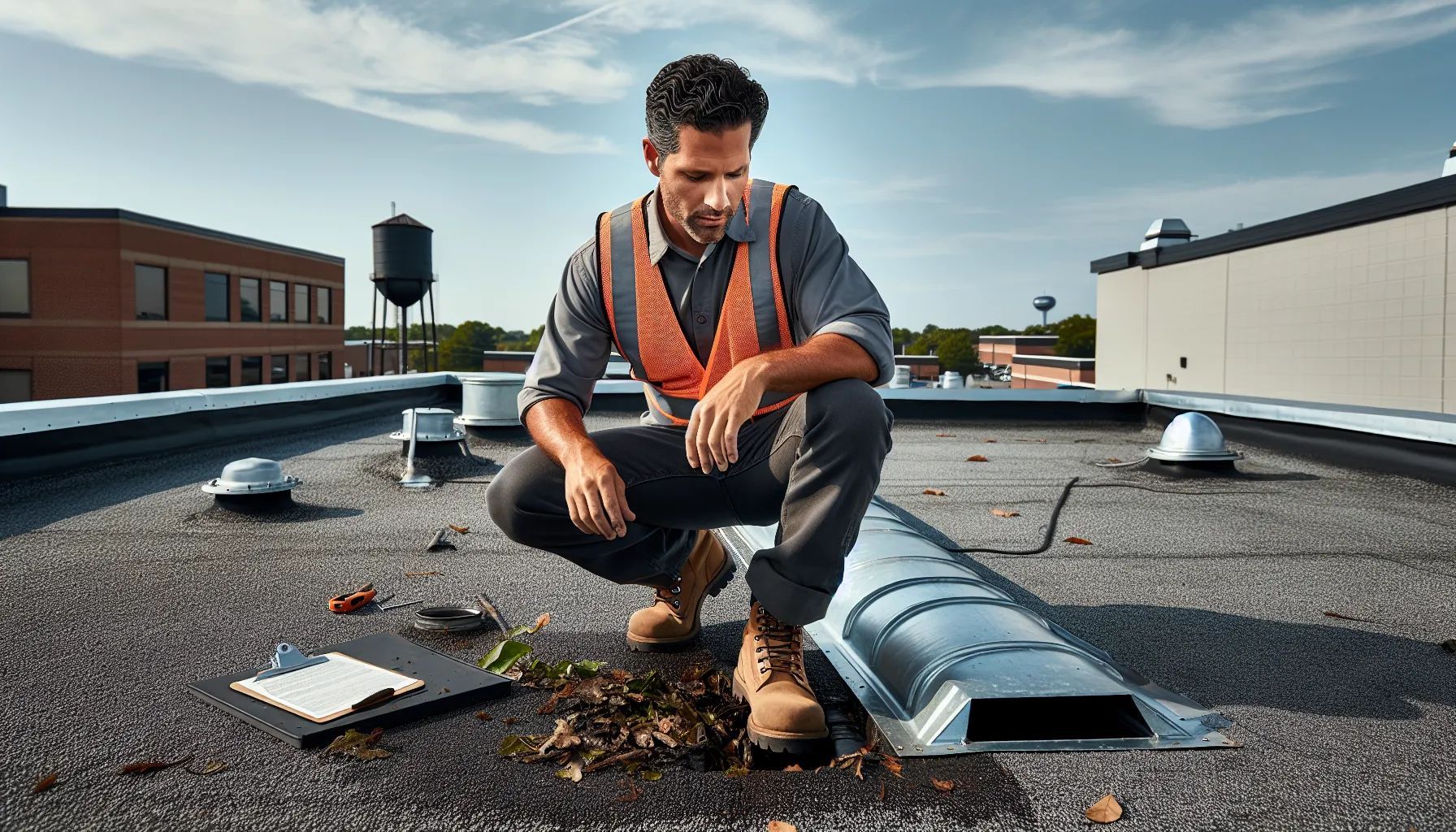Roof Inspection for Insurance Claim: Guide to Maximize Your Settlement
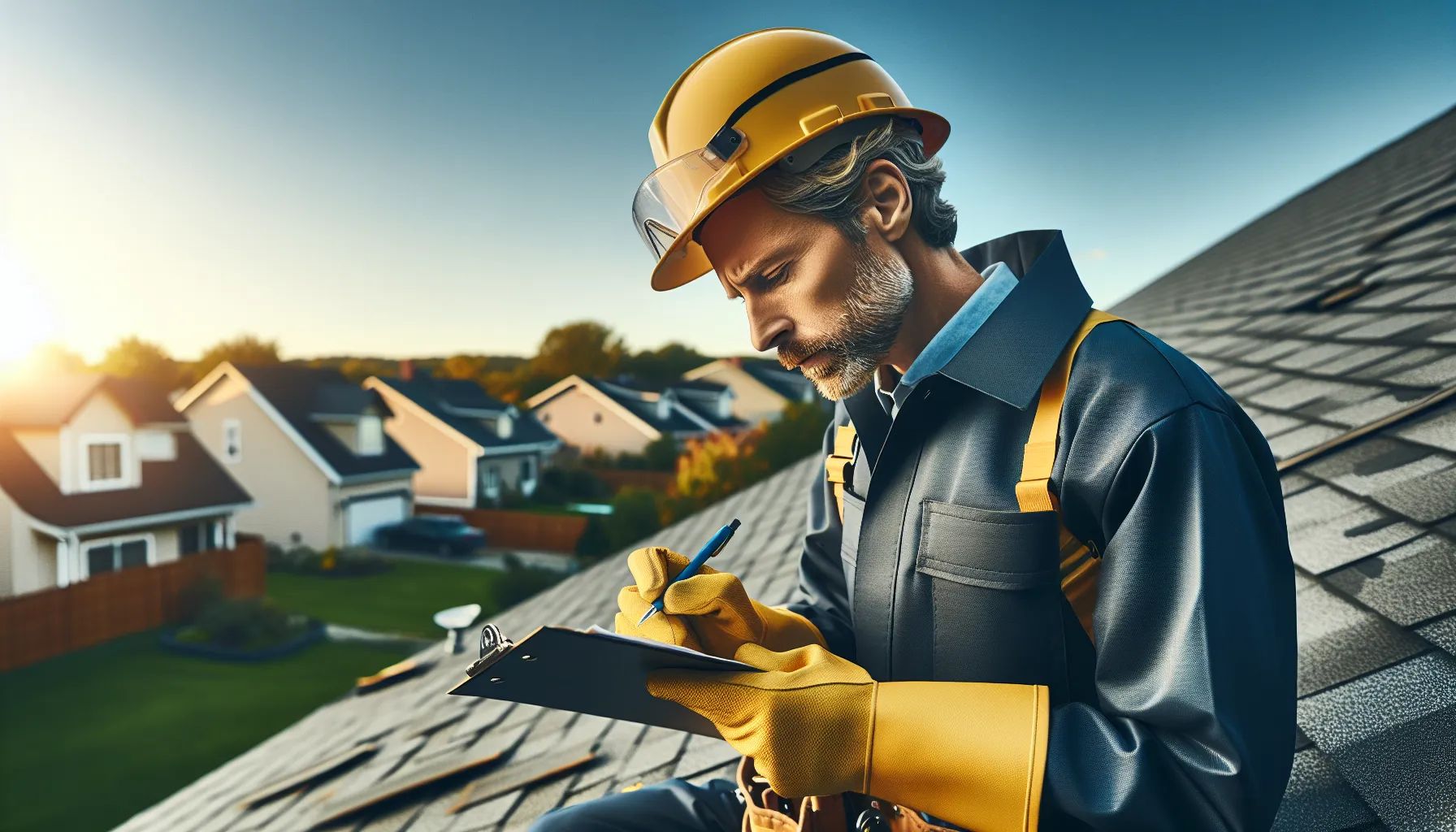
When storm damage strikes your home, a proper roof inspection for insurance claim purposes can make the difference between full coverage and claim denial. We've seen countless homeowners struggle with the claims process simply because they didn't know what inspectors look for or how to prepare.
The stakes couldn't be higher. Insurance companies send their own adjusters who might miss critical damage or undervalue repairs. Without proper documentation and understanding of the inspection process you're at a significant disadvantage. That's where knowing the ins and outs of roof inspections becomes your secret weapon.
We'll walk you through everything that matters during these crucial assessments. From the specific damage indicators adjusters search for to the documentation that strengthens your case you'll discover how to maximize your claim's success rate.
What Is a Roof Inspection for Insurance Claims?
A roof inspection for insurance claims evaluates storm damage to determine repair coverage. Insurance companies require these inspections after weather events like hailstorms, hurricanes, or severe thunderstorms damage residential roofing systems.
Professional inspectors document visible damage through photographs, measurements, and detailed reports. The inspection process typically takes 30-60 minutes for average-sized homes between 1,500-3,000 square feet.
Insurance adjusters examine specific damage indicators during their assessment. These indicators include missing shingles, dents from hail impact, torn flashing, and compromised roof decking.
Purpose of Insurance Roof Inspections
Insurance roof inspections verify legitimate damage claims and establish repair costs. Companies use inspection findings to approve or deny coverage based on policy terms.
Inspectors differentiate between storm damage and normal wear. Storm damage includes sudden impact marks, while wear appears as gradual deterioration over 15-20 years.
Documentation from inspections protects both homeowners and insurance providers. Detailed reports prevent fraudulent claims and ensure fair compensation for actual damage.
Key Components Inspectors Examine
Inspectors check eight primary roof components during assessments. These components include shingles, gutters, flashing, vents, skylights, chimneys, fascia boards, and underlying decking.
Shingle inspection reveals impact damage through circular dents measuring 1-3 inches in diameter. Inspectors count damaged shingles per 100 square feet to determine replacement necessity.
Gutter systems show storm damage through dents, separations, and accumulated debris. Inspectors measure dent depth and spacing to assess hail intensity.
Metal flashing around chimneys and vents displays storm damage through tears and displacement. Inspectors check seal integrity at all roof penetrations.
When to Request a Roof Inspection for Insurance Purposes
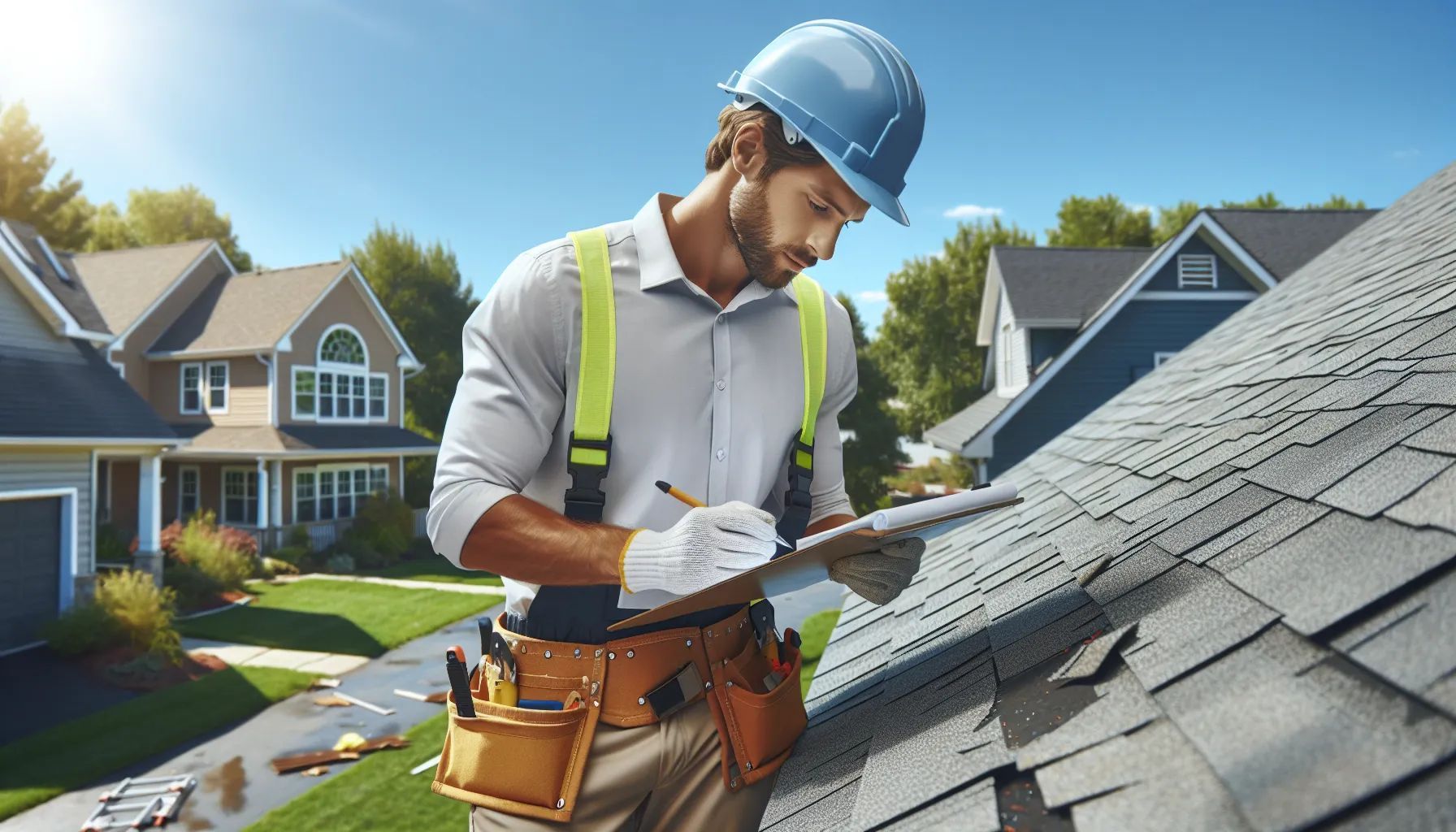
Timing plays a crucial role in successful insurance claims for roof damage. We recommend scheduling inspections at specific intervals to protect your investment and ensure maximum coverage.
After Storm Damage
Storms create immediate risks that require prompt inspection within 24-48 hours. Wind speeds exceeding 45 mph can lift shingles and expose underlayment, while hail larger than 1 inch in diameter causes impact damage to roofing materials. We've observed that insurance companies typically accept claims filed within 60 days of storm events.
Professional inspectors identify five common storm-related issues: missing shingles, granule loss, exposed nail heads, damaged flashing, and gutter dents. Each issue requires specific documentation for insurance approval. Photographs taken from multiple angles strengthen claim submissions.
Insurance adjusters look for fresh damage indicators during post-storm inspections. Clean fracture lines on shingles indicate recent breaks, while oxidation patterns show older damage. We document these distinctions to support legitimate claims.
Early detection prevents secondary damage from water infiltration. A single compromised shingle can lead to $3,000-$5,000 in interior repairs if left unaddressed. Quick inspections stop minor issues from escalating into major expenses that insurance might not cover.
Following Natural Disasters
Natural disasters demand comprehensive roof evaluations within 72 hours. Hurricanes generate sustained winds over 74 mph that tear off entire roof sections, while tornadoes create pressure differentials that lift decking. Flooding saturates roofing materials and compromises structural integrity.
We prioritize safety assessments before detailed inspections after disasters. Structural engineers evaluate load-bearing capacity when roof framing shows stress signs. Insurance companies require these safety certifications before processing major claims.
Documentation requirements increase after natural disasters. Inspectors photograph damage from ground level, aerial views, and interior spaces. We measure affected areas precisely—insurance payouts depend on accurate square footage calculations.
Federal disaster declarations trigger special claim provisions. Insurance companies extend filing deadlines from 60 days to 365 days in declared disaster zones. We help homeowners understand these expanded timelines and additional coverage options available during federal emergencies.
During Regular Policy Reviews
Annual inspections maintain continuous insurance coverage and prevent claim denials. Insurance companies can reject claims for "lack of maintenance" when homeowners skip regular inspections. We schedule inspections every 12 months to document ongoing roof condition.
Policy renewal periods offer optimal inspection timing. Insurance carriers often require roof certifications for homes over 20 years old before renewing coverage. These inspections cost $200-$400 but prevent policy cancellations worth thousands in potential losses.
Regular inspections establish damage timelines for future claims. Pre-existing conditions documented during routine inspections help differentiate new damage from wear patterns. We maintain detailed records showing roof evolution over time.
Preventive maintenance identified during regular inspections reduces premiums. Insurance companies offer 5-15% discounts for homes with documented maintenance programs. Small repairs costing $500-$1,000 prevent major claims averaging $10,000-$15,000.
How Insurance Companies Conduct Roof Inspections
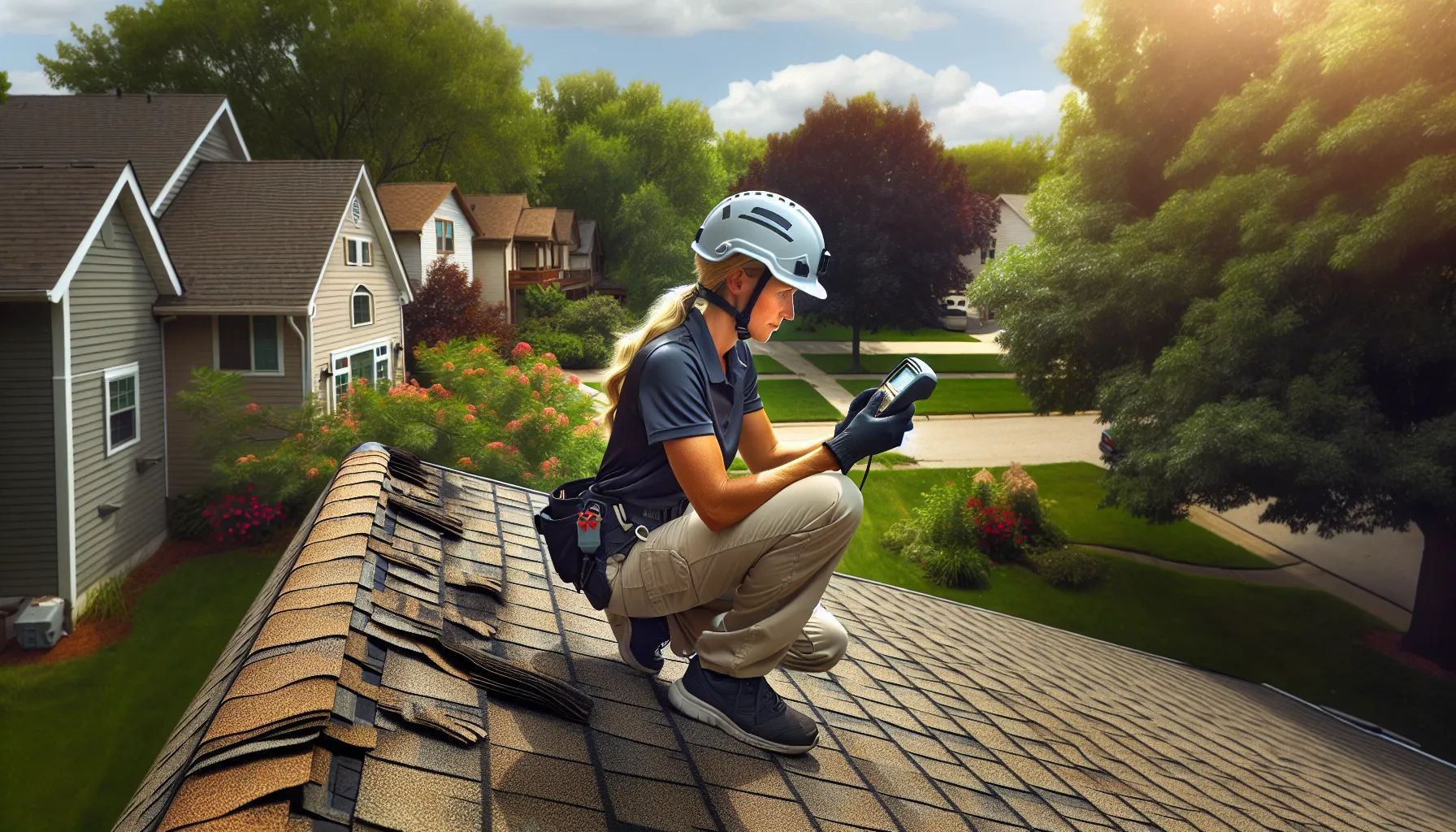
Insurance companies require professional roof inspections when homeowners file claims for storm damage or when initiating policies. These inspections assess risk, validate claims, and determine coverage amounts based on specific evaluation criteria.
Initial Documentation Requirements
Insurance companies request basic property information before scheduling inspections. Homeowners provide details about roof age, material type, and previous repairs. Companies need historical records that show maintenance patterns and past damage events.
Inspectors collect comprehensive documentation during visits. They take photographs from multiple angles showing damage location and severity. Written notes accompany each photo to create clear reference points for claim processing.
Documentation includes measurements of damaged areas. Inspectors record dimensions of missing shingles, hail impact zones, and water infiltration points. These measurements help calculate repair costs accurately.
Insurance adjusters require evidence of recent storm activity. Weather reports from the damage date support claims by confirming wind speeds, hail size, and precipitation levels. Local meteorological data strengthens documentation packages.
Digital documentation speeds claim processing. Insurance companies prefer electronic submissions with high-resolution images and detailed reports. Cloud-based systems allow instant access to inspection findings for all parties involved.
Professional Inspector Assessment
Licensed roofing professionals conduct inspections following National Roofing Contractors Association standards. Inspectors hold certifications that qualify them to evaluate structural damage and estimate repair costs. Insurance companies verify inspector credentials before accepting assessment reports.
Interior evaluations start in attic spaces. Inspectors check rafters, decking, and insulation for water stains, mold growth, and structural compromise. Ceiling examinations reveal leak patterns that indicate exterior damage locations.
Exterior assessments cover all visible roof surfaces. Inspectors examine shingle condition, noting curled edges, granule loss, and impact marks. They document missing materials, exposed underlayment, and compromised seals around penetrations.
Specialized equipment enhances inspection accuracy. Moisture meters detect hidden water damage beneath roofing materials. Drone technology captures aerial views of steep or dangerous roof sections safely.
Inspectors evaluate auxiliary components affecting roof performance. Gutter systems, downspouts, and ventilation features receive thorough examination. Flashing around chimneys, skylights, and vents gets special attention for seal integrity.
Damage Evaluation Process
Inspection reports contain specific damage classifications. Inspectors differentiate between storm damage and normal wear using industry criteria. Each damage type receives detailed description with supporting photographic evidence.
Cost estimates accompany damage assessments. Inspectors calculate material quantities and labor hours for each repair item. Current market prices determine final repair or replacement recommendations.
Insurance adjusters compare inspection findings against policy coverage. Covered perils like wind and hail damage qualify for compensation. Excluded items such as poor maintenance or gradual deterioration result in claim denial.
Damage causation analysis prevents fraudulent claims. Inspectors identify damage age through weathering patterns and oxidation levels. Fresh damage shows distinct characteristics compared to pre-existing conditions.
Final reports influence claim outcomes significantly. Comprehensive documentation supports maximum compensation for legitimate damage. Insurance companies base settlement amounts on inspector recommendations and policy limits.
Common Types of Roof Damage Covered by Insurance
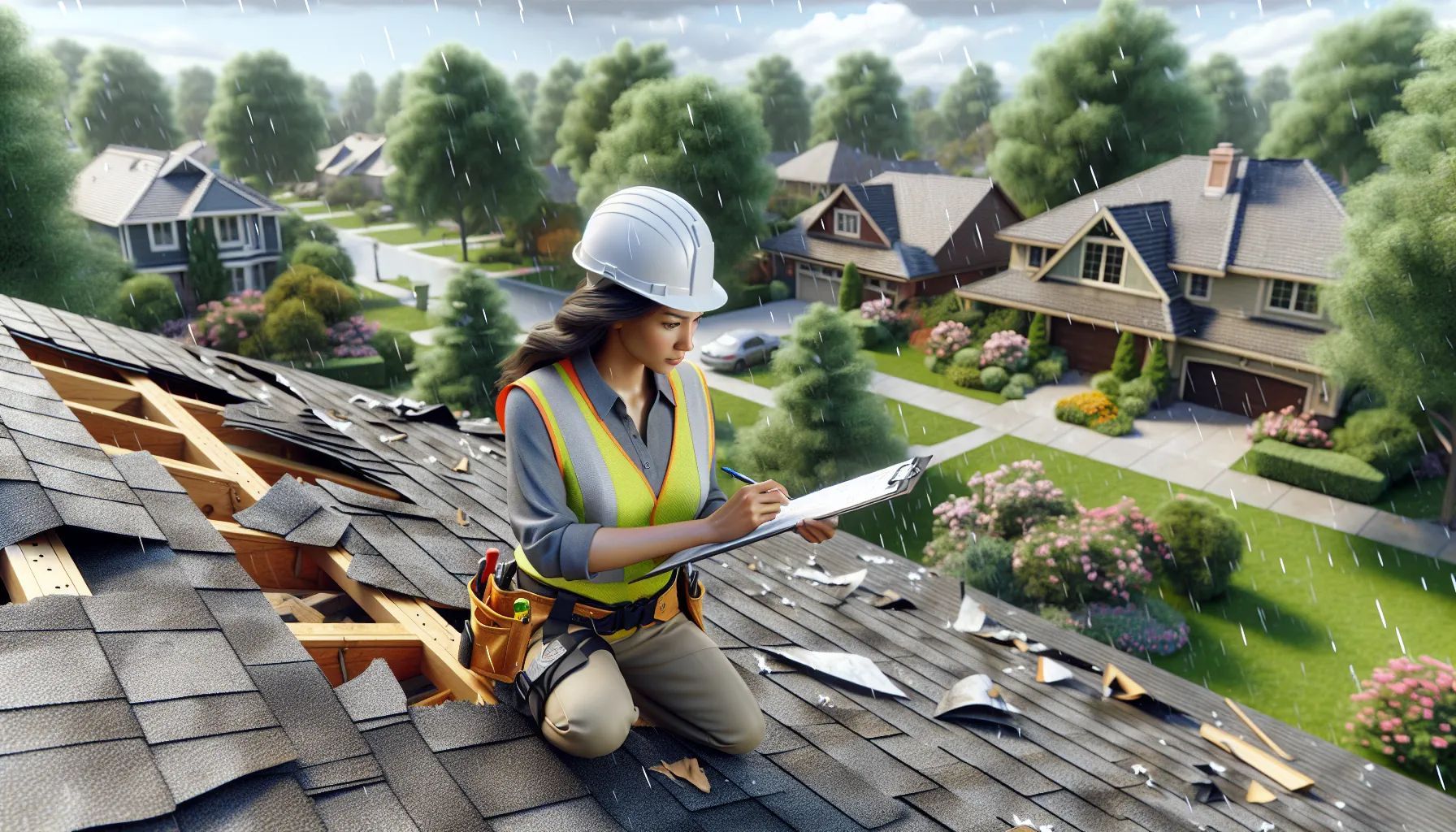
Insurance policies protect homeowners from specific perils that cause sudden roof damage. We'll examine the most common covered damages and exclusions to help you understand your policy's protection.
Wind and Hail Damage
Wind and hail represent the leading causes of roof insurance claims across the United States. Insurance companies cover damage from straight-line winds exceeding 50 mph and hailstones measuring 1 inch or larger in diameter.
Wind damage manifests as missing shingles, lifted edges, and exposed underlayment. Adjusters document these issues through photographs showing bare roof decking or curled shingle corners. Claims for wind damage require proof of recent storms through weather reports confirming wind speeds in your area.
Hail creates distinct circular dents on asphalt shingles and metal components. Insurance inspectors measure dent sizes and count impacts per square foot to determine damage severity. Policies typically approve replacement when inspectors find 8-10 hail strikes per 100 square feet on slope faces.
Storm damage coverage includes secondary issues like water infiltration through compromised shingles. Insurance pays for interior repairs when wind or hail creates openings that allow rainwater inside. Documentation must connect interior damage directly to the covered storm event.
Water Damage and Leaks
Insurance distinguishes between sudden water damage and gradual deterioration. Policies cover water damage from storms that compromise roof integrity through wind-driven rain or ice dam formation.
Covered water damage requires a direct connection to a covered peril. Examples include torn shingles allowing rain entry or damaged flashing creating leak points during storms. Adjusters verify these connections through moisture readings and damage pattern analysis.
Brown ceiling stains indicate potential water damage but don't guarantee coverage. Insurance requires proof that stains resulted from recent storm events rather than long-term exposure. Fresh water marks with corresponding exterior damage strengthen claim approval chances.
Excluded water damage includes slow leaks from worn sealants or degraded pipe boots. Insurance considers these maintenance issues rather than sudden accidents. Regular inspections help identify these problems before they cause denied claims.
Age-Related Deterioration
Standard insurance policies exclude damage from normal aging processes. Roofs deteriorate naturally over 20-30 years through UV exposure, thermal cycling, and weather exposure.
Age-related exclusions cover granule loss, brittleness, and general wear patterns. Insurance adjusters identify these conditions through shingle flexibility tests and granule accumulation in gutters. Policies deny claims when damage stems from expected lifecycle degradation.
Insurers may limit coverage on roofs exceeding 15-20 years old. Some policies switch to actual cash value coverage, reducing payouts based on depreciation. Others exclude roofs entirely after reaching specific age thresholds.
Maintenance documentation helps distinguish between age-related wear and covered damage. Annual inspection reports establish baseline conditions and prove proper upkeep. This evidence supports claims by showing sudden changes rather than gradual decline.
What to Expect During the Insurance Inspection Process
The insurance inspection process begins when your assigned claims adjuster schedules a visit to evaluate roof damage. Understanding each stage helps you prepare effectively and increases your chances of receiving fair compensation for legitimate damage.
Inspector Arrival and Initial Assessment
The adjuster starts with a visual assessment of your property's exterior. They photograph your home from multiple angles and document the overall roof condition. Initial observations include noting visible damage areas and recording weather conditions during the inspection.
Adjusters verify your identity and policy information before beginning. They confirm the claim details match the damage location and date. This verification process takes 10-15 minutes.
The adjuster asks about the damage timeline and any temporary repairs you've made. They review the documentation you've prepared including photographs and contractor estimates. Having these materials ready speeds up the initial assessment phase.
Areas of Focus During Inspection
Insurance adjusters examine specific roof components to determine coverage eligibility. They check shingles for cracks, missing pieces, and granule loss. Each damaged shingle gets photographed and its location marked on a roof diagram.
Inspectors measure hail impacts using specialized gauges. They count dents per square foot in multiple test areas across the roof. Insurance companies require specific impact sizes and quantities to approve hail damage claims.
Gutters receive careful examination for dents and granule accumulation. Adjusters inspect downspouts for blockages and storm-related damage. They document bent or detached gutter sections with measurements and photographs.
Flashing around chimneys, vents, and skylights gets checked for separation or damage. Adjusters test these areas for water penetration using moisture meters. They note any rust, corrosion, or missing sealant that indicates storm damage rather than age-related wear.
The adjuster compares observed damage against your policy's covered perils. They distinguish between storm damage and excluded deterioration by examining damage patterns and consulting weather data from the claimed incident date.
Maximizing Your Insurance Claim Success
We've covered the inspection process, but maximizing your claim requires strategic actions beyond documentation. Understanding policy coverage, working with professionals, and knowing appeal processes significantly impact claim outcomes.
Working with Public Adjusters
Public adjusters represent policyholders exclusively during insurance claims. These licensed professionals negotiate directly with insurance companies on your behalf. They charge 10-20% of the settlement amount as their fee.
We recommend hiring public adjusters for claims exceeding $10,000. They conduct independent damage assessments and create detailed reports that counter insurance company evaluations. Public adjusters identify overlooked damage that company adjusters might miss.
Their expertise includes understanding policy language and coverage limits. They calculate replacement costs using current market rates and document hidden damage like structural issues. Public adjusters attend all meetings with insurance representatives and handle claim paperwork.
Statistics show claims handled by public adjusters receive 747% higher settlements on average. They expedite the claims process by 30-45 days through proper documentation and persistent follow-up. Their involvement prevents lowball offers and ensures fair compensation.
Understanding Your Policy Coverage
Insurance policies contain specific language defining covered perils and exclusions. We find most homeowners don't fully understand their coverage until filing claims. Policy types include actual cash value (ACV) and replacement cost value (RCV).
ACV policies pay depreciated values while RCV policies cover full replacement costs. Deductibles range from $500 to 5% of dwelling coverage. Wind and hail damage typically carry separate, higher deductibles.
Coverage limits affect maximum payouts for roof repairs. Standard policies cover sudden damage from storms but exclude gradual deterioration. Named perils policies list specific covered events while all-risk policies cover everything except listed exclusions.
Review policy declarations pages for coverage amounts and deductibles. Endorsements modify standard coverage, adding or removing protections. Understanding these details prevents surprises during claims and helps set realistic expectations for settlements.
Common Mistakes to Avoid During Roof Insurance Claims
Roof insurance claims involve complex procedures that require careful attention to detail. We've identified critical errors homeowners make during the claims process that can result in reduced compensation or claim denials.
1. Not Documenting Damage Thoroughly
Comprehensive documentation forms the foundation of successful insurance claims. We recommend taking photographs from multiple angles to capture all visible damage.
Clear photos capture damage details that adjusters need to process claims. Wide-angle shots show the extent of damage across roof sections. Close-up images reveal specific damage patterns like dent sizes or crack depths.
Interior documentation proves the connection between roof damage and inside problems. Water stains on ceilings indicate active leaks. Mold growth demonstrates prolonged moisture exposure from roof failures.
Video recordings provide dynamic evidence of damage severity. Walking videos show damage progression across roof areas. Zoomed footage captures details static photos might miss.
2. Delaying the Claim Process
Insurance policies specify strict filing deadlines that homeowners must meet. Most companies require claims within 6-12 months of damage occurrence.
Early filing protects your compensation rights under the policy terms. Prompt claims prevent secondary damage from developing. Quick action demonstrates responsible homeownership to insurance adjusters.
Delayed filing creates additional problems beyond missed deadlines. Weather exposure worsens existing damage over time. Insurance companies may question the damage timeline without prompt reporting.
3. Making Temporary Repairs Before Inspection Without Documentation
Emergency repairs prevent additional damage but require careful documentation. We advise photographing all damage before making any temporary fixes.
Original damage photos establish the initial condition for insurance purposes. Before-and-after images prove repair necessity to adjusters. Receipt documentation validates repair costs for reimbursement claims.
Temporary repair materials differ from permanent solutions in insurance evaluations. Tarps and boards stop immediate problems without hiding damage. Professional repairs completed before inspection may complicate claim approval.
4. Not Understanding Policy Coverage
Insurance policies contain specific exclusions that affect claim outcomes. We recommend reviewing coverage details before filing any claims.
Age-related exclusions apply to roofs exceeding 15-20 years old. Wear-and-tear damage falls outside standard policy coverage. Deductible amounts vary based on damage types and policy terms.
Policy limits cap maximum payouts regardless of actual repair costs. Actual cash value policies factor depreciation into settlements. Replacement cost coverage provides full repair funding without depreciation deductions.
5. Filing Claims on Very Old or Poorly Maintained Roofs
Insurance companies scrutinize claims involving older roofs more carefully. Roofs exceeding 20 years face higher denial risks during claims.
Maintenance history affects claim approval decisions significantly. Regular inspection records demonstrate responsible roof care. Neglected roofs show patterns insurers classify as maintenance failures.
Pre-existing conditions complicate storm damage claims on older roofs. Adjusters distinguish between new damage and existing problems. Documentation proving recent storm causation becomes essential for approval.
6. Accepting the First Settlement Offer Without Review
Initial settlement offers often undervalue actual repair needs. We suggest obtaining independent estimates before accepting any offers.
Professional inspection reports provide detailed repair cost breakdowns. Contractor estimates include labor and material expenses. Multiple estimates strengthen negotiation positions with insurance companies.
Settlement negotiations remain open until homeowners sign acceptance documents. Higher offers become possible with supporting documentation. Professional adjusters can advocate for increased settlements.
7. Skipping Professional Assistance
Expert guidance improves claim outcomes significantly. We recommend consulting professionals throughout the claims process.
Roofing contractors identify damage patterns adjusters might overlook. Public adjusters negotiate directly with insurance companies. Legal professionals assist when claims face wrongful denials.
Professional documentation carries more weight than homeowner assessments. Expert reports include technical terminology insurers expect. Detailed measurements and specifications support higher claim values.
Conclusion
A successful roof inspection for insurance claims requires strategic preparation and thorough documentation. We've seen how timing plays a crucial role - from the initial 24-48 hour window after storm damage to the critical 60-day filing deadline. Understanding what adjusters look for and avoiding common pitfalls can make the difference between a denied claim and fair compensation.
Remember that insurance companies have their own interests to protect. That's why we recommend maintaining detailed maintenance records and scheduling annual inspections even when there's no visible damage. These proactive steps strengthen your position when you need to file a claim.
Don't hesitate to seek professional help if you're facing a complex claim or denial. Expert guidance often pays for itself through higher settlements and successful appeals. Your roof protects your entire investment - make sure your insurance claim process does the same.
What is a roof inspection for insurance claims?
A roof inspection for insurance claims is a professional evaluation of storm damage to determine repair coverage eligibility. Licensed inspectors document visible damage through photographs and detailed reports, typically taking 30-60 minutes for average homes. They examine shingles, gutters, flashing, and other components to verify legitimate damage and establish repair costs for insurance purposes.
When should I schedule a roof inspection after storm damage?
Schedule inspections within 24-48 hours after storm damage occurs. This timeframe allows proper documentation of fresh damage like missing shingles and granule loss. Insurance companies typically accept claims filed within 60 days of storm events. For natural disasters, comprehensive evaluations should happen within 72 hours, with safety assessments prioritized first.
What types of roof damage do insurance companies cover?
Insurance typically covers sudden damage from wind, hail, falling objects, and lightning strikes. Wind and hail damage are the most common covered claims. Water damage from sudden leaks is covered, but gradual deterioration isn't. Age-related wear, poor maintenance, and pre-existing damage are excluded from standard policies.
How can I prepare my roof for an insurance inspection?
Take high-resolution photographs of all visible damage before the inspection. Gather maintenance records, receipts, and previous inspection reports. Make temporary repairs to prevent further damage, documenting these with photos and receipts. Create a detailed timeline of when damage occurred and label all documentation clearly for the adjuster's review.
What happens if my roof insurance claim is denied?
If denied, review your policy coverage and the denial reason carefully. Gather additional evidence including weather reports, contractor estimates, and expert opinions. Write an appeal letter addressing each denial point with supporting documentation. Many initial denials are overturned with proper evidence. Consider hiring a public adjuster if needed.
How often should I inspect my roof for insurance purposes?
Schedule professional roof inspections annually to maintain continuous coverage and prevent claim denials. Regular inspections document ongoing conditions and establish damage timelines for future claims. This preventive maintenance can lead to reduced premiums, as insurers often offer discounts for documented maintenance programs. Annual inspections help distinguish between covered damage and normal wear.

